DEFINITION OF TERMS:
- KEYSTONE means they are listed by National Wildlife Federation as core plants for a wildlife garden in my ecoregion (Ecoregion 8).
- NOT QUITE NATIVE means they are slightly out of range but adjacent to NYS as determined by GoBotany and NY Flora Atlas.
- Otherwise the plant is a NY-native or native to the area noted.
Wake-robin trillium (Trillium erectum)
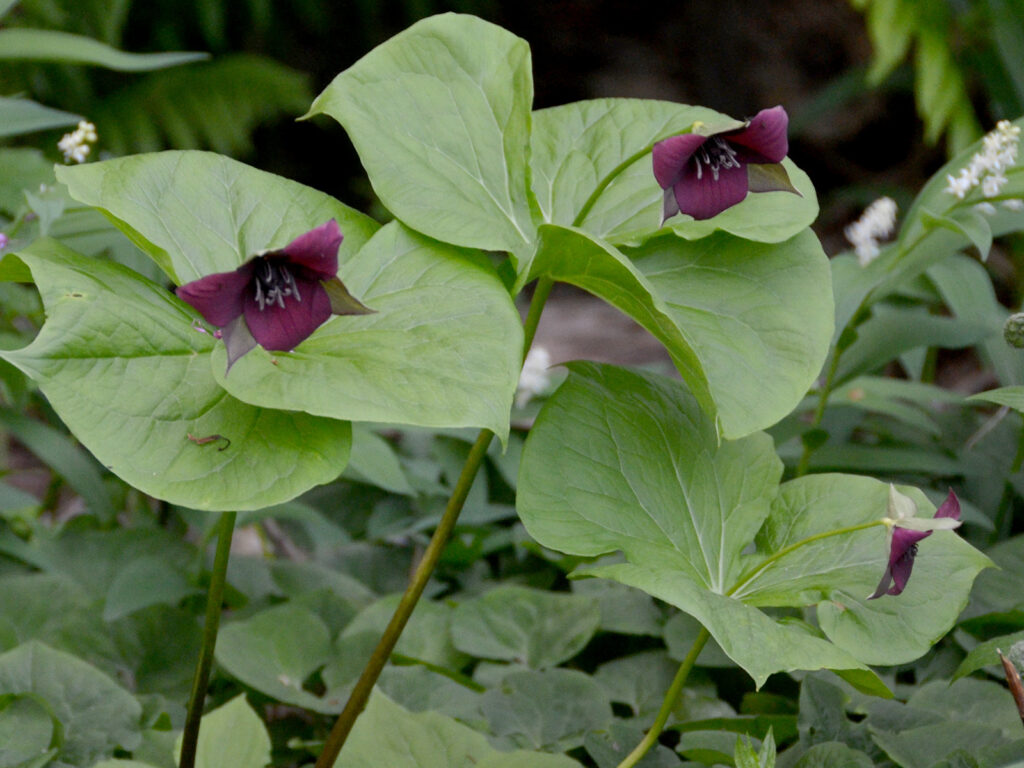
This isn’t what people think of when they think of trillium, but trillium it is. A nice contrast to the white-flowered variety.
Wildlife: Berries for birds, mammals
- Learn more:
- Wildflower Center: Wake-robin trillium
Great white trillium (Trillium grandiflorum)
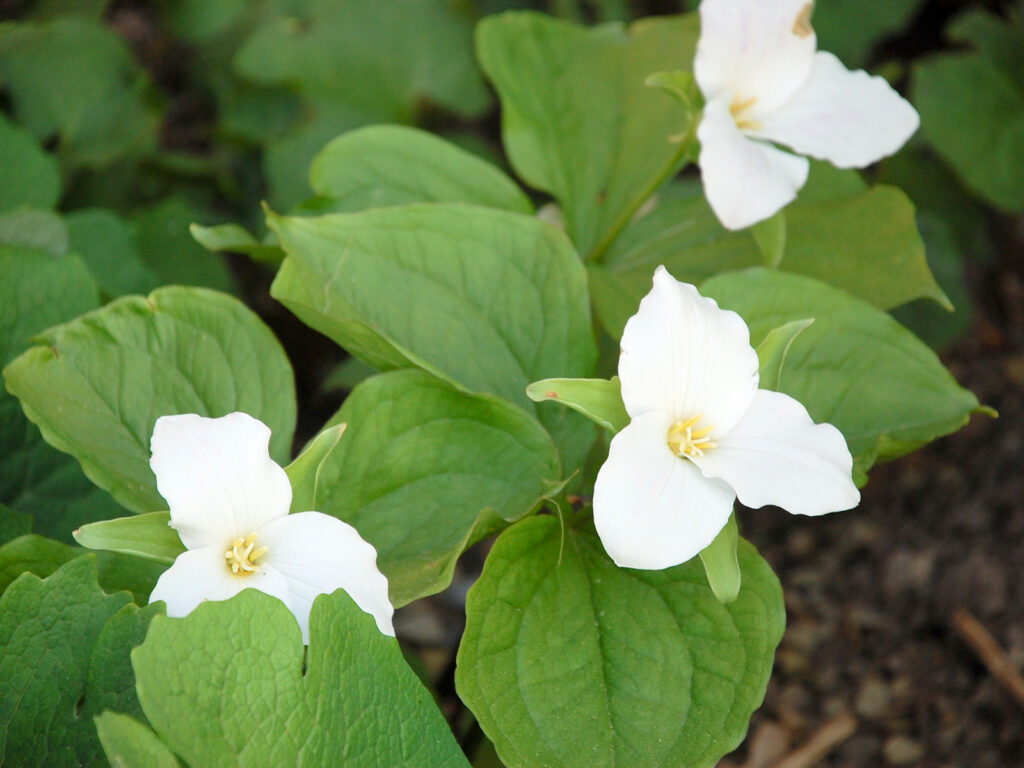
The iconic spring flower.
I try to verify as much as possible that whoever sells this plant is selling it legitimately, i.e. not poaching it from either private or public woodlands.
I hesitate even to purchase it from people selling it from their own woods, which obviously is legal, but is it ethical? It can be grown from seed, but it takes quite a few years. People have also been experimenting with tissue culture.
CAUTION: If I see this for sale cheap, it’s unlikely to have been ethically produced — perhaps even dug up from some natural area! I only buy from reputable native plant nurseries!
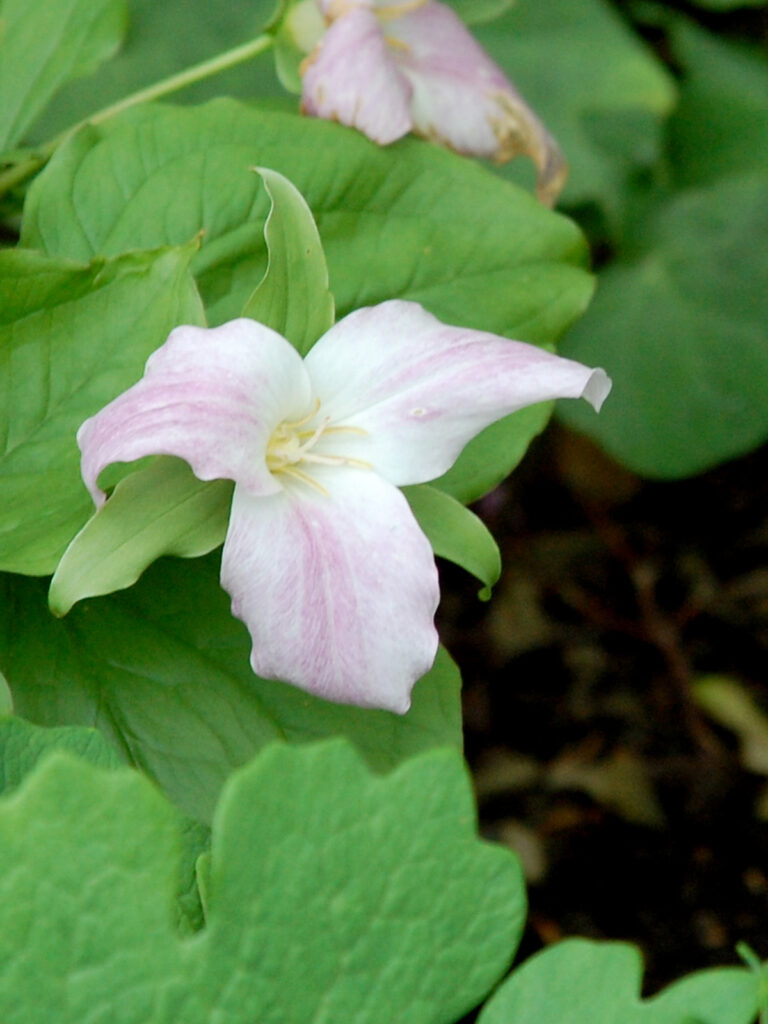
“I’ve already been pollinated!” This is the message the pinkish color sends to bees so they can move on to other trillium blooms not yet pollinated.
Wildlife: Insects
- Learn more:
- Wildflower Center: Great white trillium
Spreading globeflower (Trollius laxus ssp. laxus)
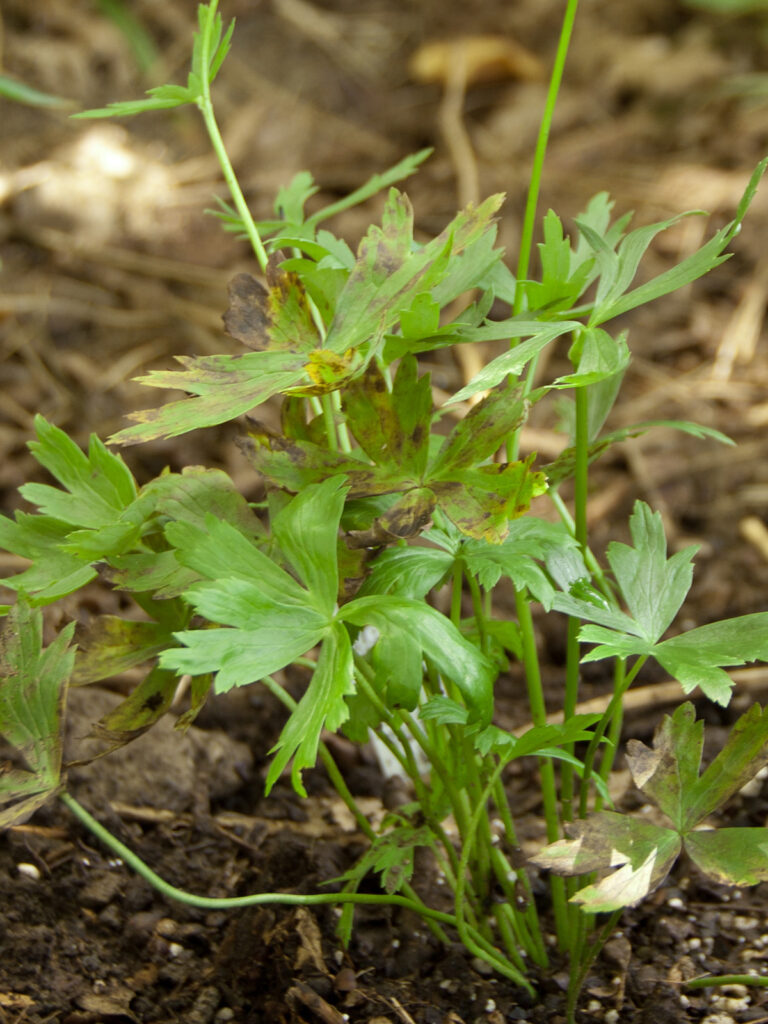
We bought this buttercup-relative at Garden in the Woods. It’s a rare species, much more common before Europeans arrived in this country.
We were looking forward to seeing its pale yellow flowers, but it may have disappeared in our front woodland – another victim of not labeling and keeping track of these new plants.
- Learn more:
- Wildflower Center: Spreading globeflower
Large merrybells (Uvularia grandiflora)
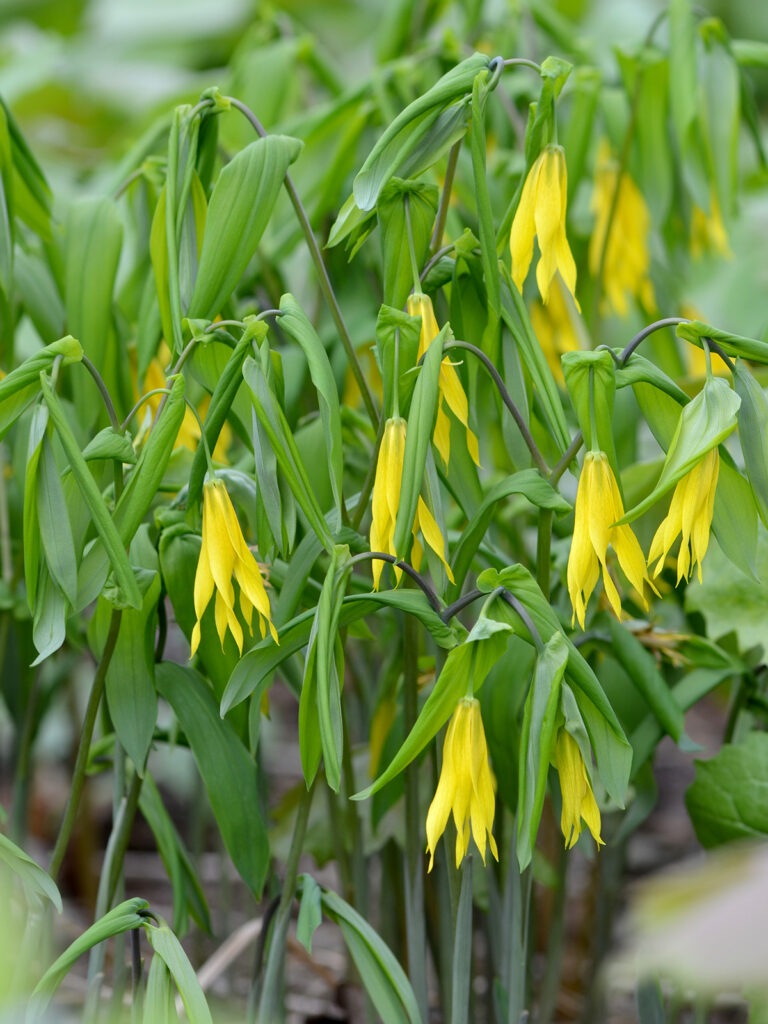
A very elegant plant with drooping yellow flowers. It’s thriving and getting larger, but I haven’t noticed it spreading at all. Darn!
If I find part of the edge of this plant that I can dig up, I’ll try transplanting it.
- Learn more:
- Wildflower Center: Large merry bells
Blue vervain (Verbena hastata)
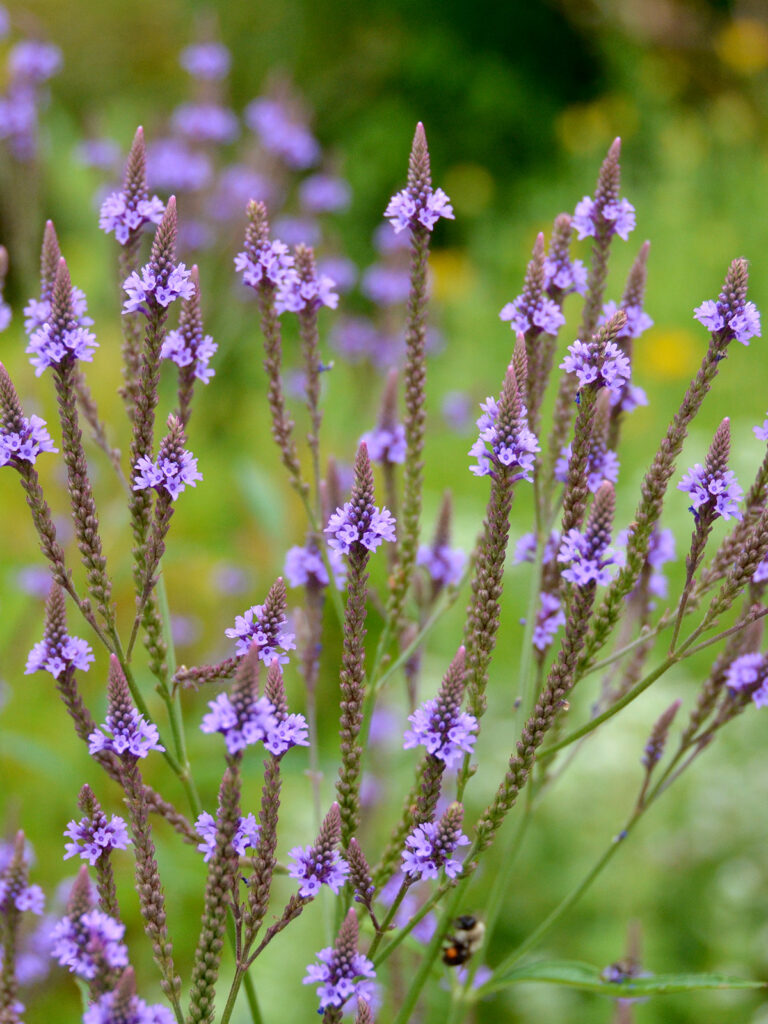
I bought both V. hastata and V. stricta (Hoary vervain) at the same time. One died out or was “misplaced,” i.e. I lost track of it and may have pulled it out.
I believe V. hastata is what I have left. It volunteers quite well, but not so much as to be a nuisance. I like the tall, candelabra-like blue flowers, and so do the bees.
Wildlife: Bees, butterflies, birds
Larval host: Common buckeye
** SPECIAL VALUE TO NATIVE BEES **
- Learn more:
- Wildflower Center: Blue vervain
KEYSTONE: New York ironweed (Vernonia noveboracensis)
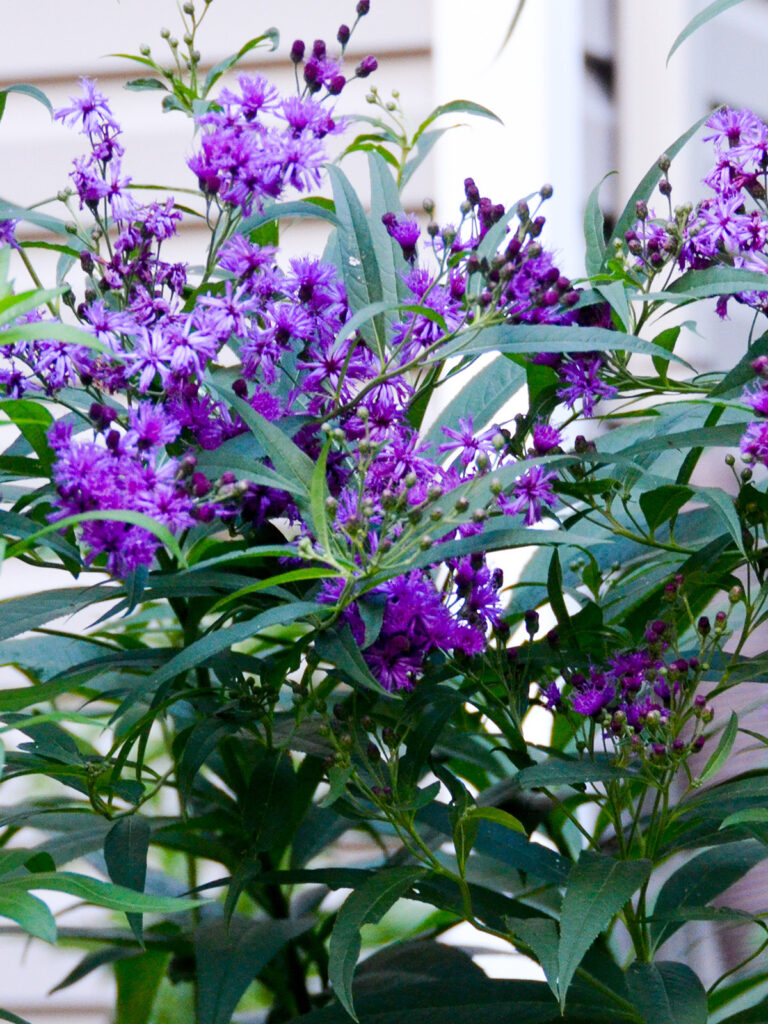
This has beautifully intense magenta flowers. The plant is rather tall, and the leaves are rather coarse.
I’ve experimented with cutting some back in June, and it works well — the plants are shorter and bushier and have at least as many flowers. Of course, this can delay flowering a bit, so I leave one or two plants to attain their full height and provide nectar sooner.
Wildlife: Seeds for birds, nectar for butterflies
** SPECIAL VALUE TO NATIVE BEES **
HOST: American Lady butterfly
- Learn more:
- Wildflower Center: New York ironweed
Culver’s root (Veronicastrum virginicum)
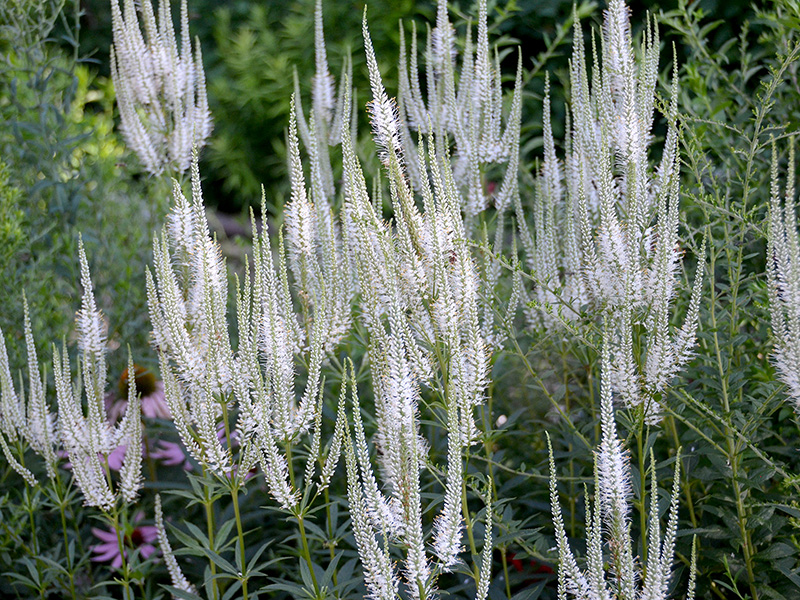
This is one of my favorite plants. I’m hoping to get a patch of them rather than having just a few sprinkled here and there.
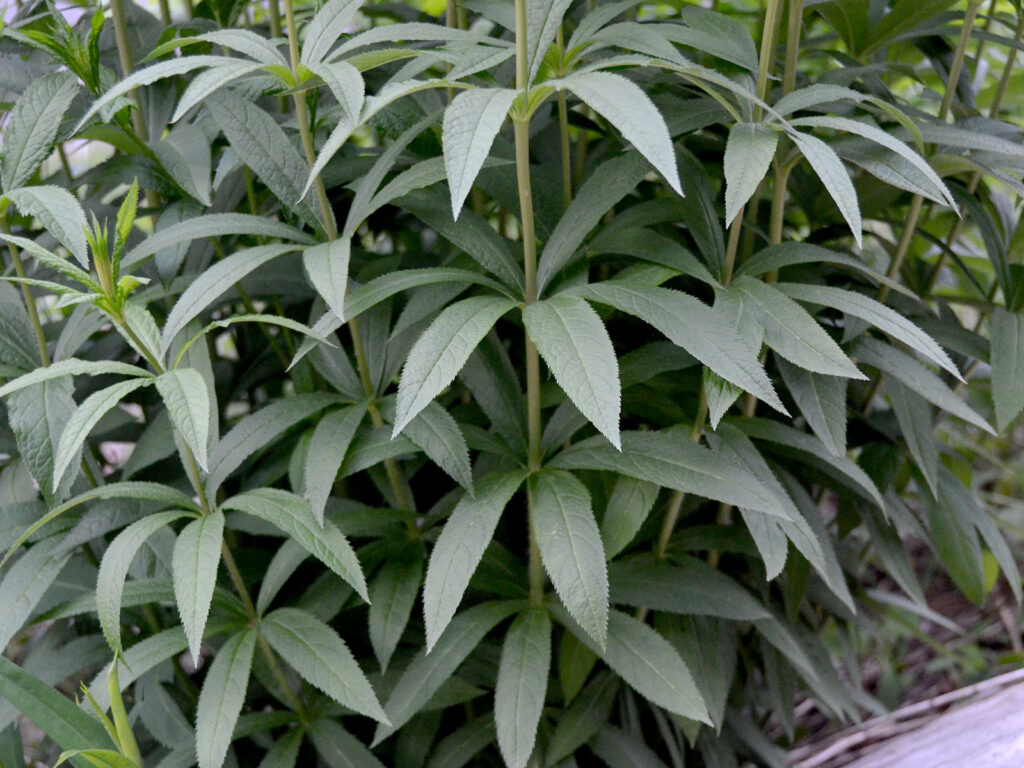
The foliage is particularly attractive. The leaves are arranged in groups of six around the stem in a very architectural style.
Wildlife: Butterflies, bees
** SPECIAL VALUE TO NATIVE BEES **
** Attracts predatory or parasitoid insects that prey upon pest insects **
- Learn more:
- Wildflower Center: Culver’s root
Labrador violet (Viola labradorica)
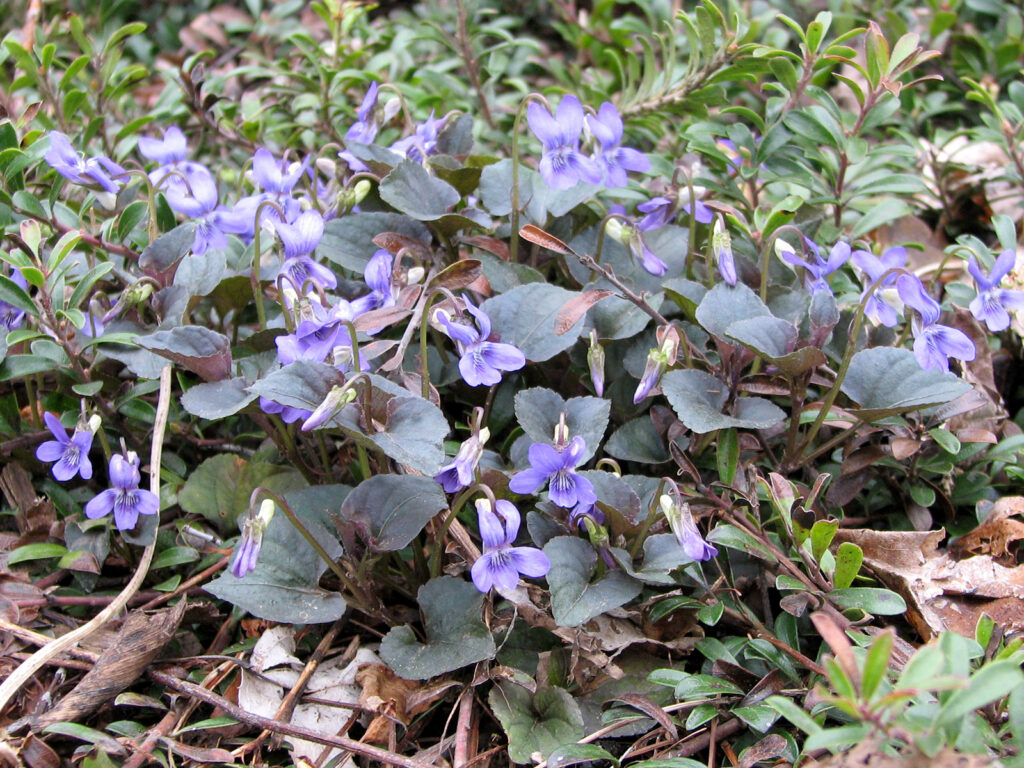
This violet has purple foliage which blends nicely with its flowers. It spreads very easily, but doesn’t seem to become a problem.
Violets are a host plant for fritillary butterflies.
Wildlife: Birds
- Learn more:
- Wildflower Center: Labrador violet
- Humane Gardener: How to save violets and why they matter
Common blue violet (Viola sororia)
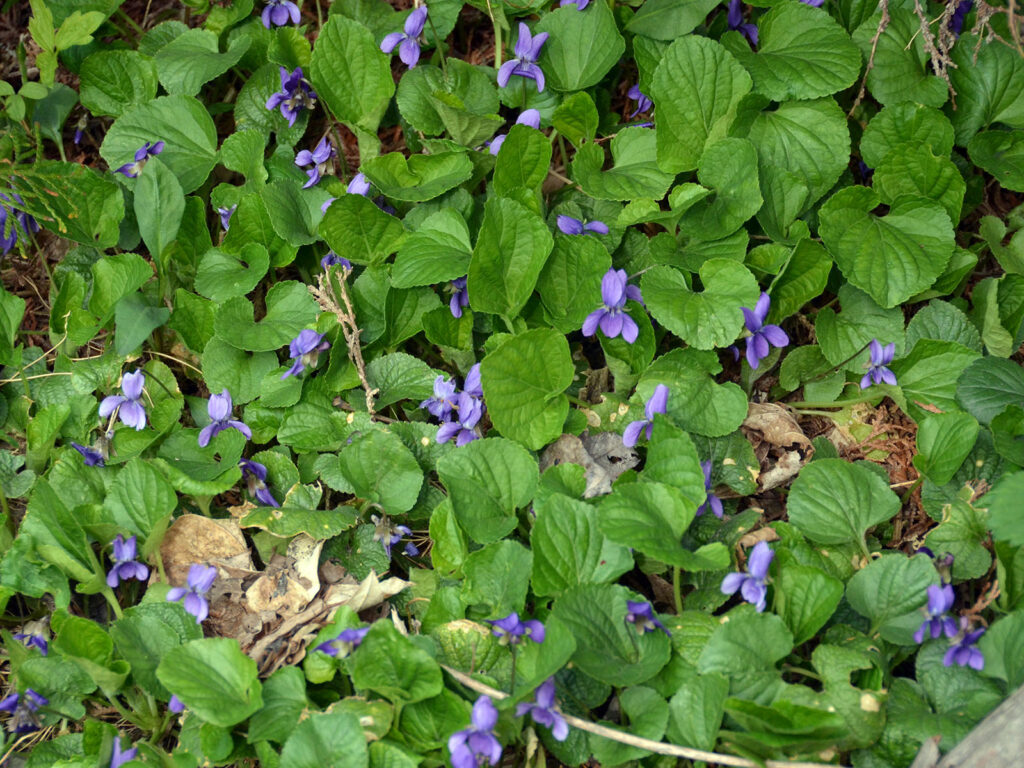
This is grows very easily to say the least! I like having it, especially since it’s a host plant for fritillaries, but it can dominate an area. I guess that would make it a good groundcover if you needed it, but I prefer small patches of it.
Deer resistant
- Learn more:
- Wildflower Center: Common blue violet
- Xerces Society: Plants for pollinators – Violets
Barren strawberry (Waldsteinia fragarioides)
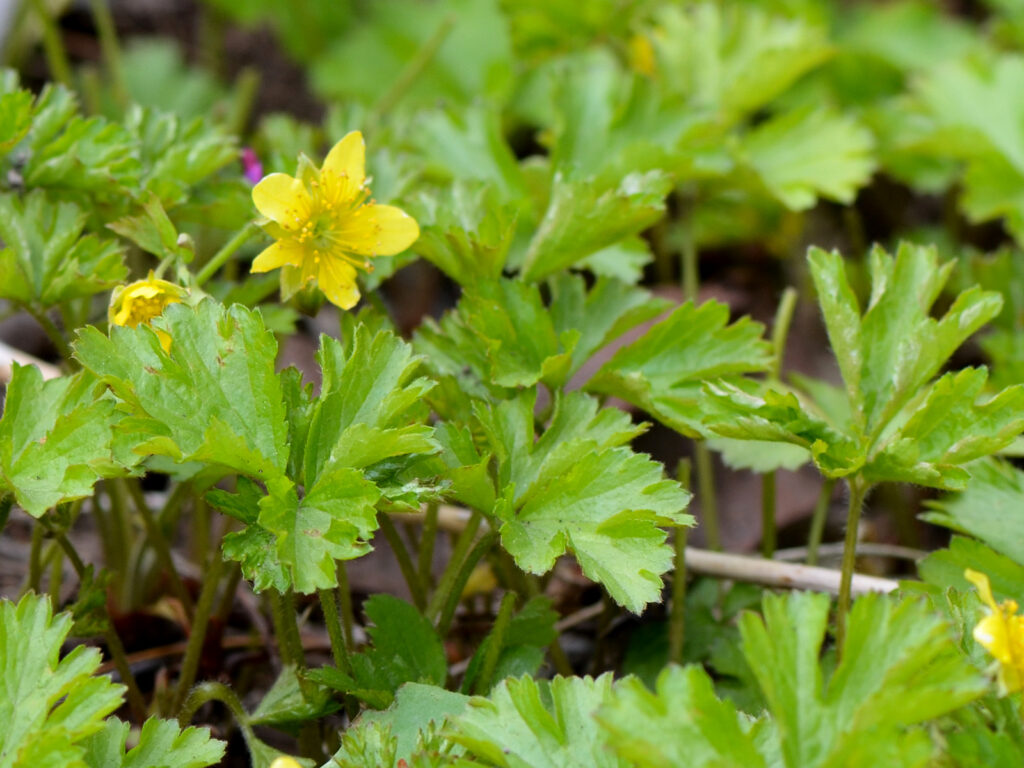
I’ve bought two of these plants at two different times. The first one I lost track of and certainly didn’t take care of it — which for me means watering it for a couple of times after planting and making sure it doesn’t get overrun by other more aggressive plants. The second one has been successful, and it’s a great ground cover.
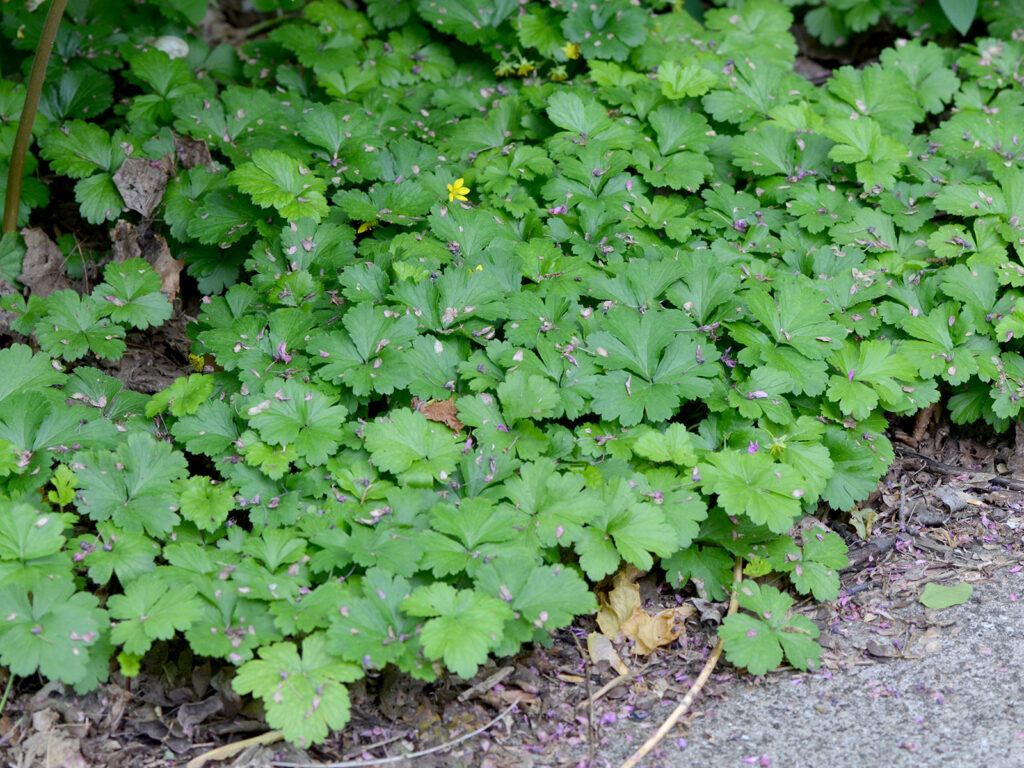
Barren strawberry foliage is a nice groundcover.
Wildlife: nectar for butterflies, insects
Deer resistance: Resistant?
- Learn more:
- Wildflower Center: Barren strawberry
Golden alexander (Zizia aurea)
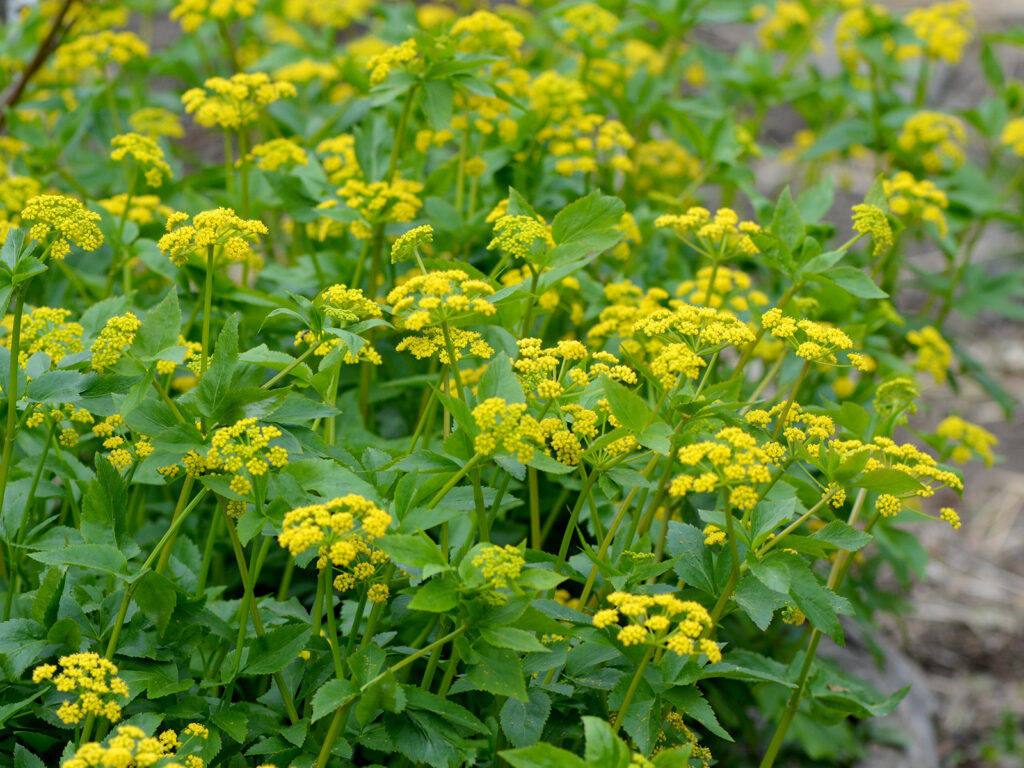
I like the flowers and foliage, but I especially like saying its botanic name: zizia.
It’s a larval host plant for the black swallowtail butterfly — one of the few native plants I’ve seen it lay eggs on, though the butterfly seems to lay eggs on dill most often. Zizia is in the same family as dill, fennel, parsley, and its other host plants.
Wildlife: Butterflies
Larval host: Black swallowtail
Deer resistance: Moderate
** SPECIAL VALUE TO NATIVE BEES **
** Attracts predatory or parasitoid insects that prey upon pest insects **
- Learn more:
- Wildflower Center: Golden alexander
